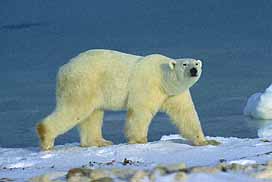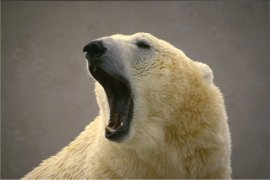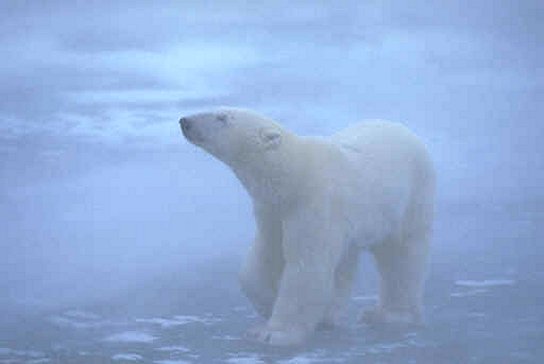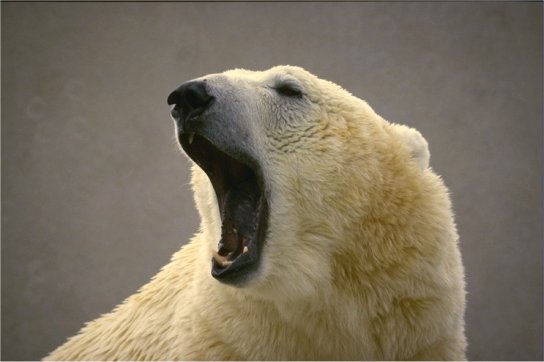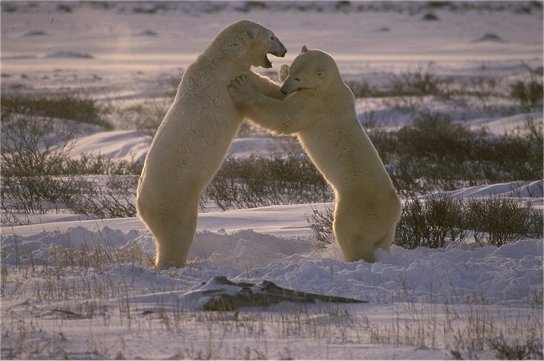Bears
Description
White fur; black nose pad, lips, and eyes. Very small ears. Long neck. Relatively long legs. Male considerably larger than female. Ht about 4' (120 cm); L 7-11' (213-335 cm); T 3 1/8-5 1/8" (8-13 cm); HF 13" (33 cm); Wt 925-1,100 lb (420-500 kg).
Breeding
Mates April-May every other year (sometimes every third year); litter of 1-4 (usually 2) young born November-January in winter den, or in excavation in snowbank, ice ridge, or hillside. Birth weight about 2 lb (900 g).
Discussion
Unlike Black and Grizzly bears, which are primarily nocturnal, the Polar Bear may be active at any time of the day or year, searching for prey on long summer days and sometimes on long winter nights. Adaptations to its Arctic habitat include its fur color, which blends with the snowy environment and so provides useful camouflage for capturing prey; its large size, which helps maintain body temperature by reducing surface-heat loss; and its furred feet, which insulate against cold and provide traction on icy surfaces. Because the hairs of its waterproof coat are hollow, they are especially insulating and increase the bear's buoyancy when swimming. An excellent swimmer, it paddles at about 6 1/2 mph (10 km/h) with the front feet only, hindfeet trailing-a trait unique among four-footed land animals-and can remain submerged for about two minutes. While swimming or treading water, it stretches its long neck for a better view, as it does on land. Owing to the scarcity of plants in its icy habitat, the Polar Bear is the most carnivorous North American bear, with canine teeth larger and molariform teeth sharper than those of other bears. An acute sense of smell enables the Polar Bear to locate prey even when it is hidden by snow drifts or ice. It stalks young seals and Walruses, and sometimes adult seals, often by swimming underwater to their ice floes. While hair seals are its staple, it also feeds on fish, birds, bird eggs, small mammals, dead animals (including whales), shellfish, crabs, starfish, and mushrooms, grasses, berries, and algae, when available. The Polar Bear hollows out a winter den in a protected snowbank, where it retires in a lethargic condition. Females den from November to March, during which time they give birth. Males den for much shorter periods, usually from late November to late January, but may be abroad occasionally at any time of the year. Cubs remain with their mother about a year and a half, denning with her the winter after their birth. The lowlands of Hudson Bay and James Bay, one of the world's largest denning areas for Polar Bears, is the only known region where Polar Bears den in earth rather than in snow. They excavate caves in lake and stream banks and peat hummocks by digging down to the permafrost. This area is unusually far south for the species, and it is believed that they use the permafrost dens again in summer to cool off. No large denning areas have yet been found in Alaska; some Polar Bears in that region may winter in Siberia, drifting across to Alaska on ice floes in spring. Polar Bears are a source of food and hides for Native Americans.

